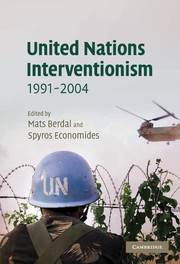4 - Somalia
Published online by Cambridge University Press: 22 September 2009
Summary
The involvement of the United Nations (UN) in Somalia was a product of the new international climate created by the end of the Cold War and by the dramatic success of Operation Desert Storm, and its aftermath in 1991. For the UN, the Somali operation, which at its height employed a force of 28,000 at an estimated cost of US $1.5 billion, broke new ground in two ways. Under Resolution 794 of 3 December 1992, the Security Council invoked Chapter VII of the Charter to authorise the establishment of an Unified Task Force (UNITAF), under US command and control, ‘in order to establish a secure environment for humanitarian relief operations in Somalia’. This was the first time that an unambiguously internal and humanitarian crisis had been designated as a threat to international peace and security, thus justifying peace-enforcement measures.
Second, with this and subsequent resolutions, the UN dropped the pretence that its involvement in Somalia arose out of an invitation from the government – although the Council continued to refer to ‘urgent calls from Somalia … to ensure the delivery of humanitarian assistance’ – since no government existed with the authority to issue such an invitation. For the first time, statelessness was acknowledged to be a threat to an international society composed of sovereign states.
The UN did not extend its prerogatives in these ways either willingly or as the result of a deliberate and carefully worked out international strategy.
- Type
- Chapter
- Information
- United Nations Interventionism, 1991–2004 , pp. 108 - 138Publisher: Cambridge University PressPrint publication year: 2007
- 5
- Cited by

